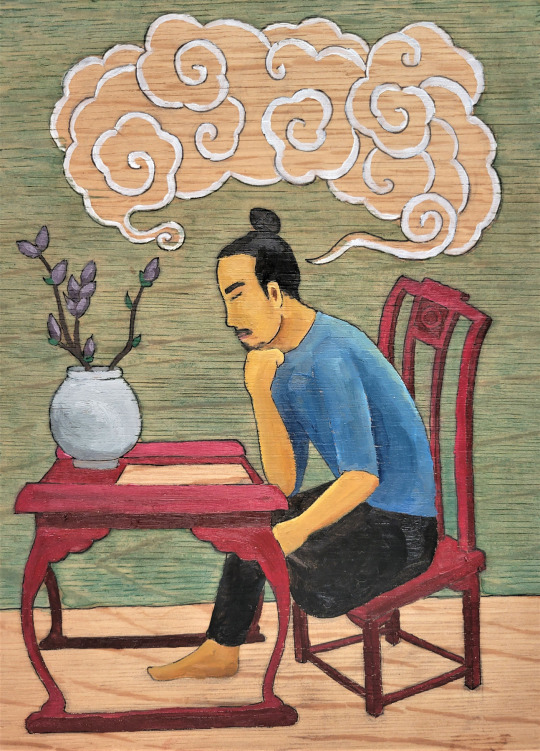#kibi daijin
Photo

He Has Writer's Block - self-portrait inspired by 19th-century printmaker Tsukioka Yoshitoshi's "Kibi Daijin Seated at a Chinese Table."
https://www.inprnt.com/gallery/eirikswood/he-has-writers-block/
10 notes
·
View notes
Note
Are there any other samurai clans other than Minamoto or Fujiwara that are involved in supernatural stuff? I know there are the likes of Taira no Koremochi or Sakanoue Tamuramaro, but it seems those two are the only ones outside Minamoto and Fujiwara that encountered Oni-like beings.
Regardless of the military exploits of Fujiwara no Hidesato and the like, Fujiwara were a court noble (kuge) clan first and foremost and their power declined with the rise of military governments, so I would not count them as a "samurai clan" tbh. If you're counting them you also have to count Kibi no Makibi (encounters an oni in Kibi Daijin Nitto Emaki), Miyako no Yoshika (encounters an oni in multiple sources), Ki no Haseo (encounters an oni in Haseo zoshi), Ono no Takamura (encounters oni in hell), or virtually any story involving an onmyoji considering both Abe and Kamo clans were court nobility. It is natural stories either originally devised in the Heian period or dealing with the Heian period feature the major political players of this era - this is essentially the phenomenon you are somewhat inaccurately describing. Heian period remained the favored backdrop for many sorts of stories, and arguably retains this role today, hence you will see considerably more Minamotos or Kamos than Tokugawas or Tsuchimikados in such contexts.
This being said, there is no shortage of stories set in later periods in which historical figures - samurai or not - encounter supernatural beings, also. Yaegaki-hime comes to mind as an example. You just need to look beyond the sources you're depending on atm.
However, you have to also take into account that by the Edo period many people were reasonably well educated and simply didn't believe in supernatural creatures; or at the very least did not see them as something people would encounter in these times, at least not in urban areas. Wondering why you don't hear about the Tokugawa shoguns encountering oni is kind of like wondering why you don't hear about Louis XIV encountering centaurs. It was an era of growing literacy rates, playful engagement with the classics, but also strenghtened confucian euhemerism. As Noriko Reider put it, oni were essentially de-demonized and became a commodity - and older stories were being reinvented as satire. Her book is open access, you can read it here. I guarantee you will understand the matters you've asked about much better after reading it.
12 notes
·
View notes